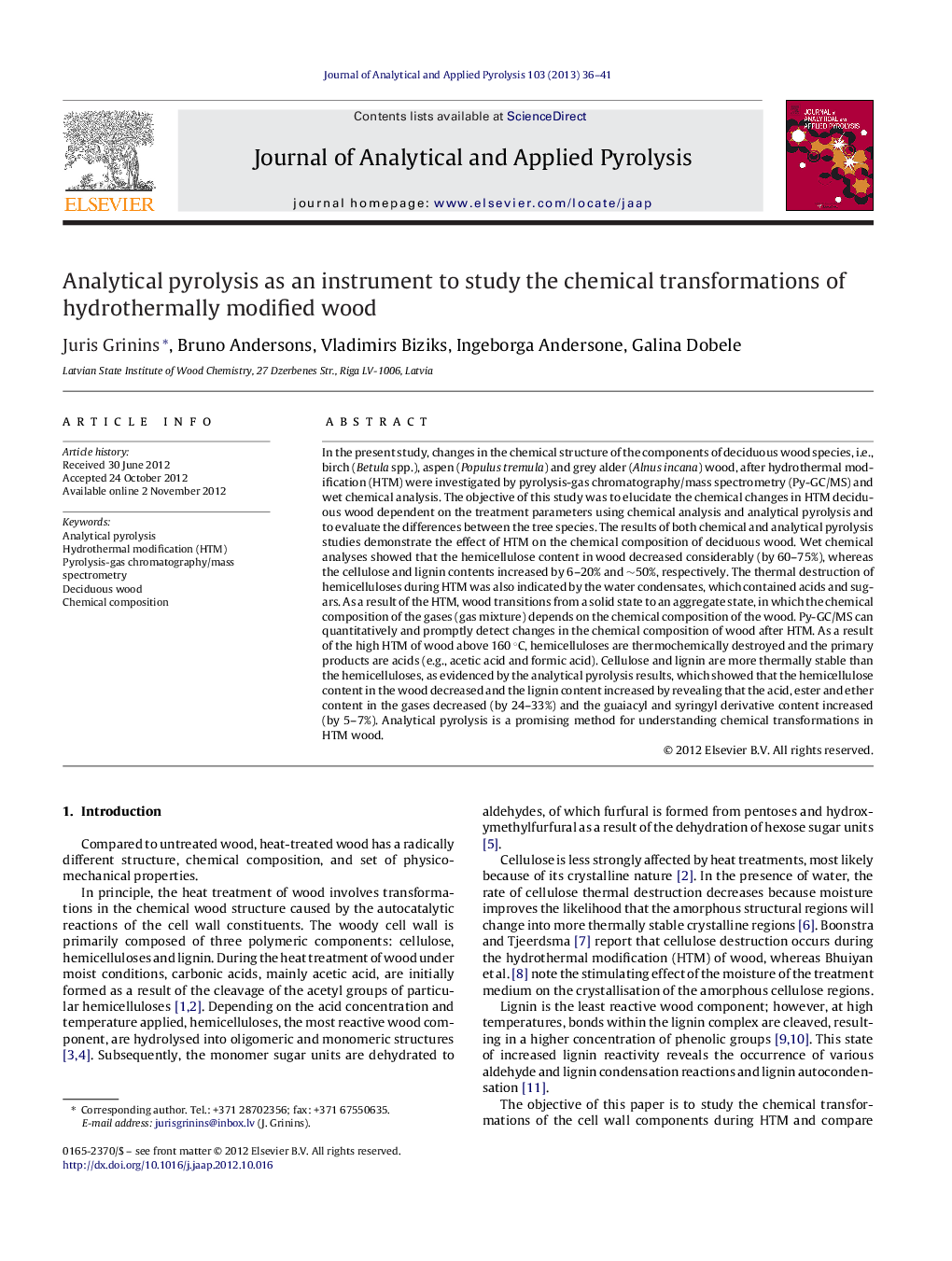| Article ID | Journal | Published Year | Pages | File Type |
|---|---|---|---|---|
| 1197167 | Journal of Analytical and Applied Pyrolysis | 2013 | 6 Pages |
In the present study, changes in the chemical structure of the components of deciduous wood species, i.e., birch (Betula spp.), aspen (Populus tremula) and grey alder (Alnus incana) wood, after hydrothermal modification (HTM) were investigated by pyrolysis-gas chromatography/mass spectrometry (Py-GC/MS) and wet chemical analysis. The objective of this study was to elucidate the chemical changes in HTM deciduous wood dependent on the treatment parameters using chemical analysis and analytical pyrolysis and to evaluate the differences between the tree species. The results of both chemical and analytical pyrolysis studies demonstrate the effect of HTM on the chemical composition of deciduous wood. Wet chemical analyses showed that the hemicellulose content in wood decreased considerably (by 60–75%), whereas the cellulose and lignin contents increased by 6–20% and ∼50%, respectively. The thermal destruction of hemicelluloses during HTM was also indicated by the water condensates, which contained acids and sugars. As a result of the HTM, wood transitions from a solid state to an aggregate state, in which the chemical composition of the gases (gas mixture) depends on the chemical composition of the wood. Py-GC/MS can quantitatively and promptly detect changes in the chemical composition of wood after HTM. As a result of the high HTM of wood above 160 °C, hemicelluloses are thermochemically destroyed and the primary products are acids (e.g., acetic acid and formic acid). Cellulose and lignin are more thermally stable than the hemicelluloses, as evidenced by the analytical pyrolysis results, which showed that the hemicellulose content in the wood decreased and the lignin content increased by revealing that the acid, ester and ether content in the gases decreased (by 24–33%) and the guaiacyl and syringyl derivative content increased (by 5–7%). Analytical pyrolysis is a promising method for understanding chemical transformations in HTM wood.
► Hydrothermal modification – modification in a saturated steam environment at superatmospheric pressure. ► The relative amount of hemicelluloses in the modified wood decreases, but that of cellulose and lignin increases. ► Hemicelluloses–the most thermally unstable component of the cell wall. ► Water condensate – a mixture of the products of thermal destruction of hemicelluloses. ► In lignin pyrolysis products, the content of compounds with a short aliphatic chain increases.
